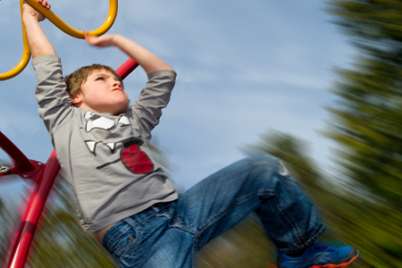


Thirsty kids should stick to water, not sports drinks, says latest study
Sports and energy drinks pose health risks to kids and teens

Study: Teens need to be more active throughout the day
Study shows rates of exercise decline in teen years

Ontario’s Seneca College to train teachers in physical literacy
Educators will learn how to conduct fitness and lifestyle assessments

Michelle Obama, first lady and mom, aims to get U.S. kids active
Leading by example with the Let’s Move! initiative

The failure of Ontario’s ‘No Time to Wait’ report
Dr. Dean tells you why nutrition alone won’t solve the obesity problem

Active children dramatically more coordinated than sedentary children
Childhood is crucial to the development of motor coordination skills, which is essential to health

Study: Active video games can’t replace real activity
Active video games are an incomplete strategy to get kids physically active

Parents push kids into ‘athletic arms race’
It’s a troubling new trend, children being encouraged early on to specialize in one sport

Study: healthy habits best introduced in early childhood
A Swedish study determines that proper diet and active lifestyle habits are crucial to helping younger children lose weight

Governor General salutes physical literacy
Physical literacy has a new supporter: His Excellency David Johnston, the Governor General of Canada. On July 19, 2012, the Governor General was the guest of honour at a special launch event for a new children’s physical literacy program in Victoria. He spoke strongly in favour of programs to increase physical literacy among Canadian children … Continued

The Active for Life initiative: The time is right
Physical literacy is a simple solution that can reverse the negative trends for kids

Social networking: Increasing physical activity?
Peer pressure gets a bad rap, especially from parents of young kids, but new research has found that persuasive friends can have a positive effect: increased physical activity. A report from Pediatrics linked social networks among kids aged five to twelve with their activity levels. “We see evidence that the children are mirroring, emulating or … Continued